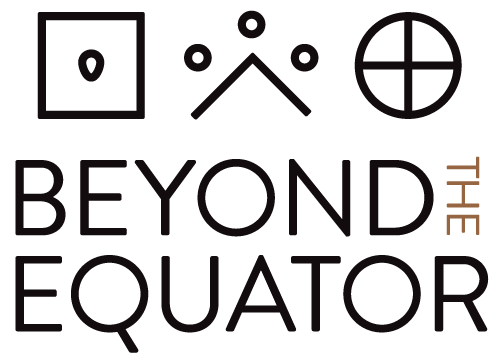You may have already read up on our take on the Whole30 diet and the Ketogenic diet, but what about Paleo? These three diets are so much a part of our diet culture now that you can barely read about one without it mentioning the others. What exactly is Paleo though and how can you still maximize your nutrition (and enjoyment of food!) while following this diet trend?
What Is Paleo?
Your first inclination when you read ‘paleo diet’ may be to link it to an image of a neolithic man...and you wouldn’t be completely wrong in doing this. Except that paleolithic refers to an even earlier time in our history - around 2.5 million to 10,000 years ago. While the neolithic period refers to a period when our ancestors began formal agricultural pursuits, paleolithic humans relied on hunter-gathering techniques to source food.
The paleo diet was first developed in the 1970s by gastroenterologist Walter Voegtlin. He believed that by mimicking the eating habits of our paleolithic ancestors, we could achieve better health.
Paleo focuses on consuming only foods that in the past could be obtained by hunting and gathering. Typically this would include lean meats, fish, fruits, vegetables, nuts, and seeds. While it is not possible to know exactly what these ancestors consumed, research shows it consisted of mostly whole foods.
According to Healthline:
“By following a whole-food-based diet and leading physically active lives, hunter-gatherers presumably had much lower rates of lifestyle diseases, such as obesity, diabetes, and heart disease. In fact, several studies suggest that this diet can lead to significant weight loss (without calorie counting) and major improvements in health.”
What Can’t I eat When Going Paleo?
Because dairy products, legumes, and grains only emerged with the development of farming in the neolithic age, they are excluded from the paleo diet. While following this diet you need to avoid:
- Processed foods including ‘healthy’ pre-made protein bars or anything labeled ‘diet’ or ‘low-fat’.
- Sugar and high-fructose corn syrup, honey, and maple syrup may be used sparingly. Soft drinks and juice are off the menu.
- Grains, this means no bread or pasta. As well as no wheat, rice, spelt, rye or barley.
- Most dairy products, some versions of the paleo diet will allow full-fat dairy products such as butter and cheese.
- Legumes and legume-based products such as peanut butter. This includes beans, lentils, chick-peas, etc.
- Artificial sweeteners, which are usually labeled as aspartame, sucralose, cyclamates, saccharin, or acesulfame potassium.
- Vegetable oils that come from farmed sources such as Soybean oil, sunflower oil, cottonseed oil, corn oil, grapeseed oil, and safflower oil.
- Trans fats, usually found in margarine and other highly processed products.
Incorporating Ample Nutrition When Paleo
If the above exclusions have you wondering how you can possibly enjoy a wholesome meal when paleo, you’re not alone. Thankfully, shifting into a paleo diet is not quite as challenging as you might imagine. Some smart and considered grocery shopping can ensure you still enjoy your food, meet your nutritional goals, and feel satiated.
Approved paleo foods include:
- Meat - being careful to avoid processed products such as flavored mince or those with marinades.
- Fish and seafood with a preference for wild-caught when possible.
- Free-range eggs.
- Vegetables and fruit, organic when available.
- Tubers (root vegetables) such as potatoes, sweet potatoes, and turnips.
- Nuts and seeds including almonds, walnuts, hazelnuts, sunflower seeds, pumpkin seeds, chia, flax, and more.
- Healthy fats and oils, for example, extra virgin olive oil, coconut oil, and avocado oil.
- Salt, herbs, and spices from natural origins, i.e. no MSG.
While paleo you may drink water, tea, coffee, wine, herbal tea, bone broth, kombucha, coconut water, and unsweetened sparkling water.
If you have an almond or other tree nut allergy you may find that paleo becomes even more limiting. With nuts being one of the main sources of protein essential vitamins and minerals in this diet, how do you still follow along with forgoing great nutrition? Enter Beyond The Equator 5 Seed Butter.
How Seed Butter Can Help You Stay On Track
While seeds are approved on the diet, finding ways to consume enough of them to feel full or to harness their nutritional benefits can pose a challenge. Eating paleo means you cannot just sprinkle seeds on your breakfast cereal or mix them into a dairy-based smoothie. By incorporating our Unsweetened 5 Seed Butter into the mix you can still enjoy some delicious meals and snacks.
Our Unsweetened 5 Seed Butter is created using a blend of roasted pumpkin, chia (a paleo superfood), flax, sunflower, and hemp seeds. There is no added sugar or oil and our production line is completely nut-free.
Paleo approved ways that you that can use 5 Seed Butter as an ingredient include:
- Paleo energy balls. Roll in our chia seeds for added protein and nutrition.
- As a salad dressing. Simply blend a little olive oil, lemon juice, and Unsweetened 5 Seed Butter.
- As an ingredient in paleo-approved cookies. Using maple syrup, coconut or sunflower seed flour, eggs, and our seed butter you can create a seriously moreish treat.
- Spread on homemade seed cookies or sunflower seed flour pancakes.
- As a dip for veggie sticks or smeared on apple slices and sprinkled with cinnamon.
There are endless ways to incorporate our nutritionally dense spread into your paleo diet. As a bonus, our product is also Non-GMO verified, vegan, and free of the top 8 recognized allergens.
Choose 5 Seed Butter
Sunflower butter and pumpkin seed butter are regularly discussed in paleo forums, but why choose a butter with lesser nutritional value? As this chart shows, even our Creamy 5 Seed Butter offers better protein intake, fewer carbs, and less sugar. With our Unsweetened, the sugar content is so low as to be almost undetectable, coming from the seeds themselves.
Choose 5 Seed Butter and give yourself the best chance at succeeding with the Paleo diet. Even if you have nut allergies, our product makes it possible to participate and still feel nourished and full of energy.

